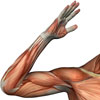Muscle pain reduced in 30 minutes
Using a hand held device the size of a computer mouse for just 30 minutes could significantly change how people deal with, and recover from, the pain associated with musculoskeletal conditions.
Edith Cowan University (ECU) School of Exercise and Health Sciences Master by Research student Harry Banyard has been investigating the effectiveness of electromagnetic therapy in treating muscle damage.
Pulsed electromagnetic field therapy (PEMFT) has already been proven to enhance the healing of bone fractures and osteoarthritis, but no scientific evidence exists on whether it can help the recovery of muscles, explains Mr Banyard.
“In testing the PEMFT, using a machine called an e-cell, I wanted to determine whether the device could really have an impact on debilitating conditions such as rheumatoid arthritis and muscle tears and sprains experienced by elite athletes,” Mr Banyard said.
“Current treatments for these conditions include costly trips to physiotherapists and remedial massage therapists. This device could provide an alternative.”
The e-cell device was tested by Mr Banyard over a period of six months on both male and female volunteers. Muscle damage was induced in their biceps by forcibly lowering their extended arm using a machine whilst they tried to maximally resist against it.
“The results suggested that the e-cell treatment significantly enhanced the recovery of muscle function including a rapid return of strength and range of motion, significantly reducing swelling and tenderness,” Mr Banyard said.
“For an elite athlete, being able to recover quickly can have a significant impact on their performance, a hundredth of a second can mean the difference between winning or losing, so any measurable improvement this device can provide is valuable.”
“The range of conditions that the e-cell could assist in treating is endless. It has the potential to be used in post-operative care for joint replacements, as well as in elite athlete recovery and for the weekend warrior gym goer who goes a bit too hard.”
(Source: Edith Cowan University (ECU))
More information
 | For more information on neurological disorders that affect movement, and their treatments, see Neurological Rehabilitation and Movement Disorders. |
Dates
Created by:

 Login
Login














